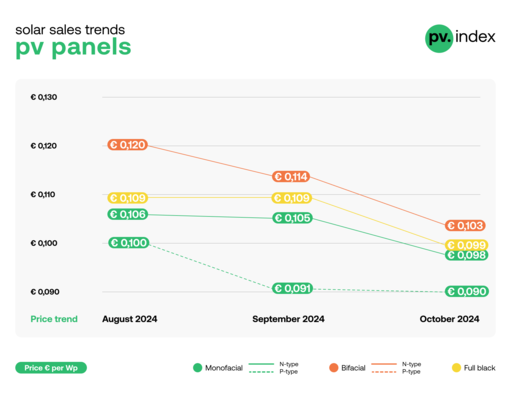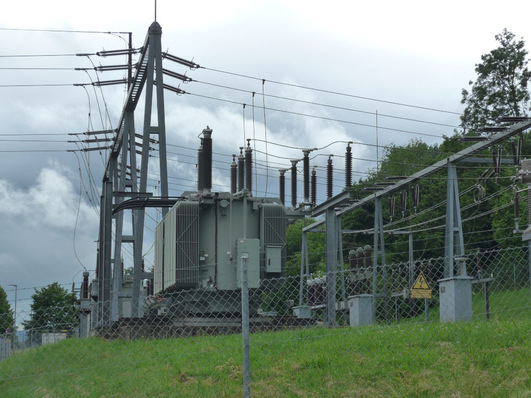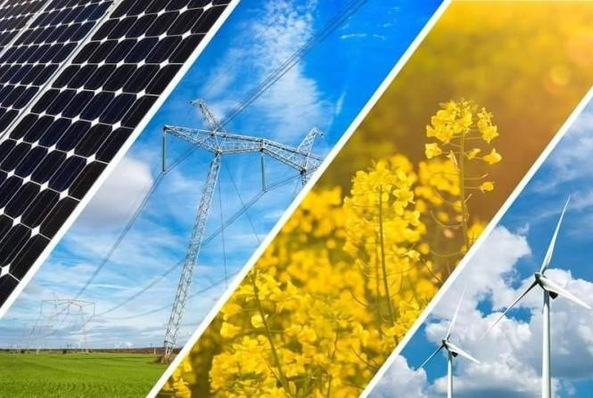Montenegro has a variety of energy resources that include: hydropower, wind energy, solar radiation, biomass and coal reserves. In the total installed power production capacity, hydropower plants take a share of 66.05%, thermal power plant 21.08%, wind power plants 11.06% and solar power plants 1.81%. Our power system is characterized by coal generation, with TPP “Pljevlja” (225 MW) that provides baseline power generation and typically generates 42-55% of Montenegro's gross energy production.
Already in 2021 Montenegro fulfilled national goal of 33% share of energy from renewable energy sources (RES) in gross final consumption, mainly due to the production in two large HPPs (HPP “Perućica” (307 MW) and HPP “Piva” (342 MW)). Two wind power plants (WPP “Krnovo” and WPP “Možura” (118 MW)) and six solar installations (2,319 MW) have been a part of the power generation mix since 2017 and 2019 respectively, but their contribution remains limited.
Distributed PV increasing – first solar park operating
Since about 75% of renewable energy generation in the total amount of electricity supplied by RES comes from hydro, there is a problem of overdependency on hydropower which varies dependent on the hydrological situation. The new Energy Community target for the share of RES in gross final energy consumption for Montenegro is 50% in 2030.
Also see: More PV and wind to save Balkan rivers
Montenegro has a great potential for using solar energy, i.e. the number of hours of insolation is over 2.000 h/year or 200 days/year for the greater part of the territory. In relation to the distributed solar generation and the “consumers-producers” concept, the increase in production from solar power plants is driven by the activities of state-owned energy company Eletroprivreda Crne Gore (EPCG), which in 2021 launched the Solari 3,000+ and Solari 500+ projects. Projects envisaged subsidized installation of 3,000 solar systems at the rooftops of residential buildings and 500 solar systems at the rooftops of buildings owned by legal entities.
Also see: COP29 – IRENA is calling for ambitious NDC updates
A total of 3,351 PV installations were put into operation, with an installed capacity of 33,913 MW. The implementation of the Solari 5000+ project is underway. So far, 1,260 PV rooftop systems were put into operation, with a total capacity of 9,445 MW. In addition, in December 2023, the first “ground mounted” SPP "Čevo" (3.25 MW) entered trial operation, followed by the issuance of a license to perform electricity production activities.

World Bank Group
Despite this growing trend in the valorization of solar radiation energy through the construction of low-power facilities, the construction of a large production capacity is still lacking. In that part, the construction of the solar park “Briska Gora” (250 MW) is planned and in the pipeline are couple of solar projects mainly in the area of Nikšić. Planned large-scale energy storage projects, if strategically implemented, can contribute to energy security and make solar energy a backbone of Montenegro’s grid.
Also see: New report shows ways to facilitate renewable integration into grids
While the shift towards solar is promising, there are challenges Montenegro must address. Integrating decentralized, renewable energy sources like solar requires significant upgrades to energy grid, originally designed for centralized power sources. The amortization rate of the energy infrastructure in Montenegro is high and its revitalization and technological modernization is needed. Here, energy storage becomes essential.
Battery energy storage project approved
Building on this momentum, EPCG is now taking critical step with the recent approval of the Battery Energy Storage System (BESS) project. The next step is the announcement of a Public Call for the preparation of a Feasibility Study and Conceptual Solution. This initiative aims to install lithium-ion battery storage at key locations across Montenegro nearby large power plants for storing electricity based on lithium-ion batteries.
Also see: EBRD promotes renewable energy in Montenegro
This is relevant since the generation profile of intermittent renewables would not always match demand profiles, leading to temporal mismatching of supply and demand of electricity and heavy demand on interconnection. The goal is to use the available network infrastructure to connect to the transmission network. By enabling the storage of surplus energy from renewable sources, BESS will improve power system flexibility and balancing, support the energy exchange and reduce reliance on fossil fuels.
Important regulatory support and colllaboration with regional partners
For solar energy to truly take hold, Montenegro needs continued regulatory support. Simplified processes for installing and connecting solar panels, as well as accessible financing options for both solar and storage solutions, are needed. The support and incentive programs for energy generation from renewable sources for own use (the Law on RES adopted in August 2024) in Montenegro should spur demand for green technologies and services.
Also interesting: Battery manufacturer BMZ establishes production in North Macedonia
Also, by incentivizing private adoption of smaller battery storage systems, the pressure on the main grid can be alleviated, especially in remote areas. Collaboration with regional partners in the Balkans and CEE region can also bolster Montenegro’s efforts, as cross-border energy exchanges create additional avenues for balancing supply and demand. In this way, Montenegro will also improve alignment with the EU Energy Policy, implement the Electricity Integration Package and create a functional energy market ready for integration into the European single market. (Ivana Vojinović/hcn)
About the author
Ivana Vojinović is a leading expert in the field of environment, climate change and EU integration in Montenegro and was one of the panelists of CISOLAR 2024 in Bucharest. Out of the 20 years of professional experience, Mrs Vojinovic spent 10 years in the Government of Montenegro on the position of a Deputy Minister/General Director for environment and climate change. Since Montenegro opened negotiations with the EU, Government appointed her for conduction of Montenegro’s negotiation process with the EU in Chapter 27-Environment and Climate Change. Currently she is a Director of the Centre for Climate Change, Natural Resources and Energy of University of Donja Gorica. Ivana Vojinović holds PhD degree in the area of environmental economy and EU integration and possess 13 years long teaching experience at the University of Donja Gorica.








